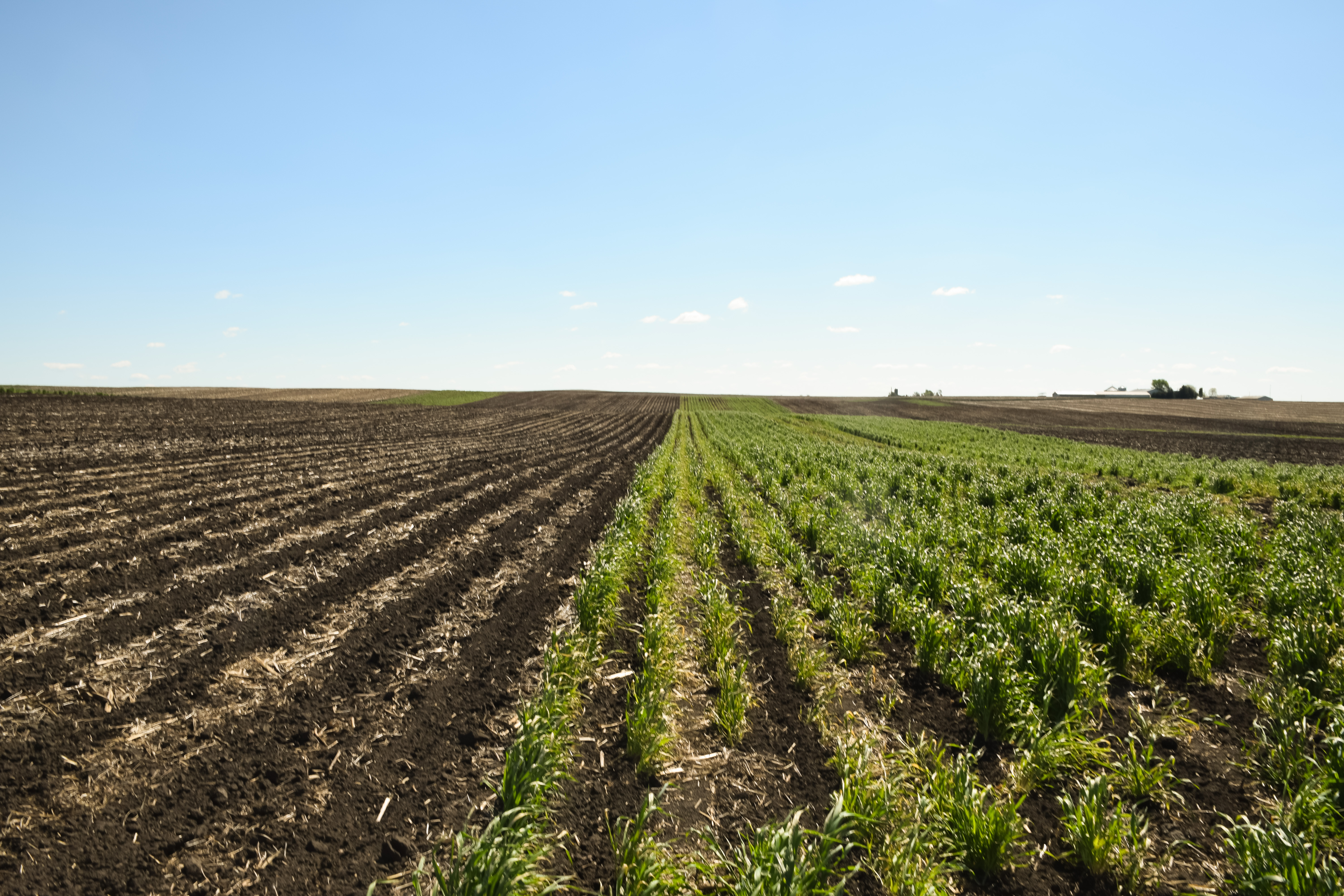
ISA's Research Center for Farming Innovation is working with trial participants to understand how cover crops and manure can work within the same system. (Photo: Bethany Baratta/Iowa Soybean Association)
Field trial explores cover crops and manure
June 10, 2021 | Bethany Baratta
In a major livestock-producing state like Iowa, livestock manure can be a readily available source of nitrogen. At the same time, cover crops have been shown to keep nitrogen in the field, reduce erosion and build soil health. Field trials designed by the Iowa Soybean Association and implemented on Iowa farms seek to understand the connection between cover crops and manure. When implemented together, what opportunities or challenges do they present?
“Our overarching goal is to determine how to best manage cover crops and figuring out how they fit in with overall management practices on the farm,” says Teresa Middleton, ISA field services program manager.
Aside from just looking at yield comparisons between the treatments, agronomists are also looking at the nitrogen cycling. To do this, they’ve buried Plant Root Simulator probes and have taken soil samples. The probes have membranes and are designed to act similarly to a plant root in the way it takes up the nitrogen ion.
“There’s nitrogen in the manure, so it’s a nitrogen source. It’s a little more complicated because it’s not like doing some sort of synthetic application. We want to make sure we’re not only looking at how cover crops interact with UAN or urea, but we want to see how it interacts with manure,” Middleton said. “What we’re looking at with manure and cover crops is the nitrogen. How well do cover crops hold on to nitrogen, and what effect does it have on yield?”
ISA member Grant Woodley implemented the trial on his farm near Clarion.
“In my operation, like many, squeezing every cent of potential out of every process is really important,” Woodley said. “One of those elements for me is manure. I spend money on pit additives to try to maximize the nutrient impact of the manure and so it was interesting to be involved in a study that could help even further the potential benefit of the manure.”
In the trial, manure was applied to the entire field and strips of rows were planted with cover crops. Alternating strips were left unplanted for testing.
Corn was planted in the fields this spring. Yield, soil and PRS probe data will be collected and aggregated field information will be sent to trial participants later this year.
Woodley admits planting the cover crops and planting corn into cover crops was a first for him.
“Drilling the rye cover crop went really well even with conditions in the fall and winter. We had a nice stand this spring,” Woodley said.
He noted that planting into cover crops added a whole new element.
“It’s already one thing to add cover crops to a current application, but application on top makes it more complex and adds to the variables and difficulties,” he said.
Curt Gentz, an ISA member and trial cooperator near Masonville, has heard about the success of rye cover crops on his business partner’s farm, but wanted to see it for himself.
“I’m hoping to learn something, and he can prove to me that it’s beneficial,” Gentz said.
He sees the opportunity in using cover crops to help capture the nitrogen added via manure.
The trial location is in a field that is strip-tilled, adding another level of testing and, in some instances, difficulty.
“We were having trouble holding the planter on the strip. We have some seed planted on a rye row, and might have lost a little potential there.”
Nonetheless, Gentz understands the potential impact of combining reduced tillage practices and cover crops to a field that utilizes manure from his hog farm.
“I like the idea of rye for erosion control. I like the concept and understand that it’s long term,” Gentz said. “We lose so much soil to erosion when we get heavy rains and that’s one of the reasons we wanted to switch to strip till, so I hope this works.”
Opportunity to learn
Participating in this trial has spurred other conversations with farmers in the area, Gentz and Woodley say.
“So now I know firsthand some of the challenges of adding cover crop application to row crops and manure, now I have better questions to ask other producers,” Woodley says.
Middleton said trials like these help ISA and farmers gain an understanding of how conservation practices can work within current management systems.
“The more trials we do, the better and more data power we’ll have, the more analytical power we’ll have and we’ll be better able to make more educated understanding of the results,” Middleton said.
For more information on this trial, contact Scott Nelson.
Back